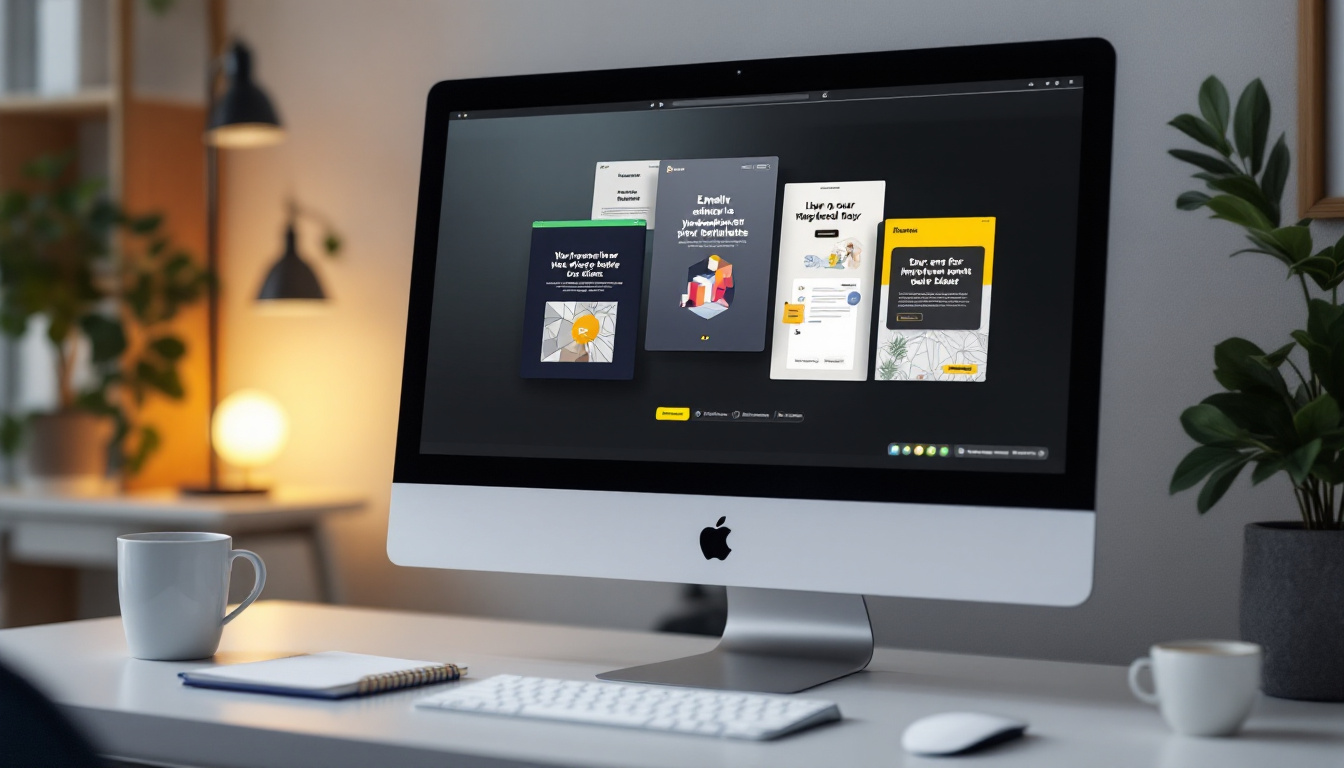Optimizing the Contact Process for a Meeting Proposal with a Strategic Partner
In the 2025 context, where globalized competition forces companies to forge strong alliances, the way you formulate a meeting proposal can make all the difference. The key lies in the ability to write an email that captures attention, establishes credibility, and encourages rapid action. A personalized, clear, and professional approach offers an effective gateway to strategic collaboration. With this in mind, mastering different email templates is essential to maximize your chances of success, whether for a discussion around shared objectives or a desire to establish a lasting partnership.
The Fundamental Elements for a Powerful Meeting Proposal
To successfully convince a potential strategic partner, each component of your email must be carefully crafted. From the subject line to the signature, a well-thought-out sequence increases response rates and facilitates the realization of planned projects. Here are the key points to follow:
- An engaging subject line: It must be precise, intriguing, yet professional, for example, “Strategic collaboration proposal for 2025.”
- An appropriate greeting: Formality or familiarity depending on the recipient.
- A contextualized introduction: Briefly reminding them who you are and why you are writing.
- A demonstration of value: Highlighting what the meeting could bring to your partner.
- A concrete meeting proposal: Dates, locations, or arrangements adapted to their schedule.
- A clear call to action: Encourage a response with simple and precise instructions.
- A professional signature: Contact information, links, and appropriate polite phrasing.
Email templates to initiate a meeting proposal with a view to partnership
The first contact is crucial. Here are several proven templates for effectively formulating your meeting request with a view to future collaboration, while strengthening your position as a reliable partner.
Template 1: Meeting proposal to explore common goals
This template emphasizes shared values and mutual benefits. It is aimed at an identified partner whose background or specialization is compatible with your project.
| Element | Content |
|---|---|
| Purpose | Meeting request: exploring a strategic collaboration |
| Body |
I would like to propose a meeting to discuss concrete possibilities for strengthening our partnership in the coming months. Would you be available for a discussion at your convenience? I am flexible regarding the date and can adapt to your schedule. |
To discover other templates of this type, you can consult this article.
Template 2: Meeting proposal to develop a joint strategy
This template emphasizes the strategic aim of the collaboration, ideal for long-term partnerships. It relies on highlighting concrete projects or shared objectives that help establish a climate of trust.
| Element | Content |
|---|---|
| Purpose | Invitation to discuss an international partnership project |
| Body |
I propose a meeting to discuss the implementation of a shared strategy and define the first steps of a lasting strategic collaboration. What dates would be convenient for a discussion? I remain at your disposal for any additional information and thank you for your attention. |
You can use this template in this other article.Techniques to maximize the impact of your meeting proposal email
Writing a compelling message isn’t enough. How you structure your email greatly influences the recipient’s reaction. Here are some essential tips:
Personalize each message:
- Mention specific details about the person or their company. Be concise and precise:
- Avoid long digressions, get straight to the point. Offer multiple time slots:
- This increases your chances of getting a favorable response. Specify the added value:
- Indicate what the meeting will bring to their organization. Include a clear call to action:
- Words like “please confirm” or “can you let me know” encourage a quick response. It’s essential to adapt the tone based on the relationship and the context. An email that’s too formal can come across as distant, while a message that’s too informal risks lacking credibility. The key is sincerity and professionalism. Concrete examples for organizing a meeting aligned with your objectives
Whether your target is a supplier, a client, or a potential partner, the precision of your request significantly influences the response rate. Here are some concrete examples of appropriate wording:
“Could we schedule a meeting next week to discuss our joint project, particularly regarding our upcoming partnership?”
“I suggest we meet on Thursday at 3 p.m., if that’s convenient, to discuss the next steps in our project discussion.”
- “Would you be available for a virtual meeting to explore shared objectives around our development strategies?”
- These flexible wordings demonstrate your respect for time and your desire to establish a constructive relationship. Demonstrate listening skills and availability to effectively advance your strategic collaboration.
- The essential tools for effectively planning your meetings
Using digital tools to schedule appointments saves a lot of time and facilitates coordination. Among the most effective in 2025:
Tool
Main Feature
| Benefit | Doodle | Surveys to choose the best date |
|---|---|---|
| Ease of use, wide adoption | Calendly | Automated scheduling based on availability |
| Reduces email exchanges, saves time | Google Calendar | Shares and synchronizes calendars |
| Facilitates team coordination | These tools support a modern and flexible approach, essential in a professional context where speed and reliability are paramount. | Best practices for writing a strategic signature in your email |
A neat signature isn’t just about your name. It should also convey your credibility and make it easier to contact. Here are the key elements to include:
Full name and position
to clarify your identity and role.
- Telephone contact information for direct contact.
- Links to your LinkedIn profile or website to increase transparency. A short thank-you note
- or a polite greeting. A professional signature, consistent with your message, enhances your image and facilitates ongoing communication.
- Strategies for effectively following up on your meeting proposals A lack of response shouldn’t discourage you. A follow-up, if done well, can make all the difference. A few rules apply:
Wait at least 48 hours after the initial message.
Adapt the message by reiterating your interest and proposing a new date.
Remain courteous, professional, and concise.
- Restore a positive tone and emphasize the value of the proposed meeting.
- Do not over-reply to avoid overwhelming the recipient.
- A well-targeted follow-up should also reiterate the specific interest of their organization, for example, by highlighting an innovation or an opportunity not to be missed.
- Mistakes to Avoid in Your Meeting Proposal Email
- To maximize your chances of success, certain faux pas should be avoided:
A vague or uninviting subject line.
An overly familiar tone in a formal context, or vice versa.
A meeting request that is too vague or rushed.
- Forgetting to tailor the message to the target audience.
- Sending an email without proofreading or verifying the details.
- Adhere to these principles and your approach will be perceived as professional and respectful, essential for establishing a reliable relationship from the first contact.
- Current Trends for Writing Effective Emails in 2025
- Technological and cultural developments are impacting the writing of business emails. Trends to follow include:
Authenticity and Personalization:
Stand out with a sincere message that reflects a detailed understanding of the recipient. Integrated multimedia:
Use videos, images, and dynamic links to illustrate your points.
- Intelligent automation: Optimize follow-ups and follow-ups using advanced CRM tools.
- Environmental friendliness: Prioritize short formats to reduce digital impact.
- Adopting these trends ensures effective communication, aligned with the expectations of this new and rapidly changing professional environment.



